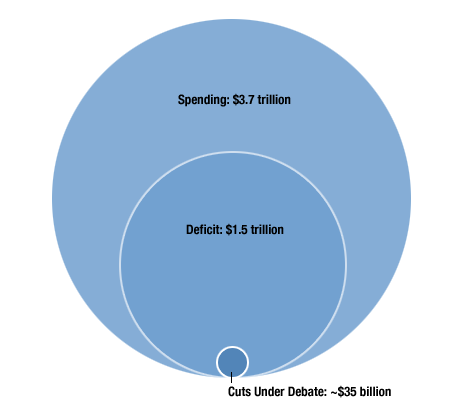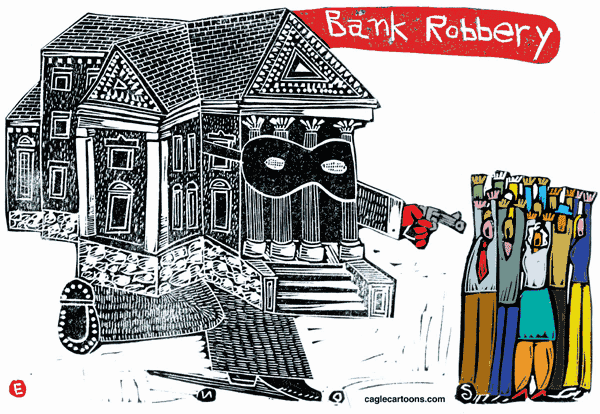 photo © 1911 The Library of Congress | more info (via: Wylio)Imagine running a marathon – a full 26 miles, only to find that you’re breaking down in the last mile. Physically exhausted, 26 miles was just one too many. All you can do is walk the end, and it’s going to blow your overall time. How much impact can one bad mile have on the overall score?
photo © 1911 The Library of Congress | more info (via: Wylio)Imagine running a marathon – a full 26 miles, only to find that you’re breaking down in the last mile. Physically exhausted, 26 miles was just one too many. All you can do is walk the end, and it’s going to blow your overall time. How much impact can one bad mile have on the overall score?
Well, if you’re running at an 8 minute mile pace up to that point, and you have to walk – it takes twice as long – 16 minutes, then your average speed for the race is 8.3 minutes per mile, or an 8:18 average.
By no means have you ruined the race.
But what If there was a retroactive penalty for walking? What if it added, say, 30 seconds to every mile run thus far? In the case where you ran the last mile in 16 minutes instead of 8, given this penalty of 30 seconds per mile, the average time per mile is now 8.79 minutes (or 8:47). Your average, as far as the record books go, is 47 seconds per mile worse than your pace for 25/26ths of the race.
That’s not an insignificant difference in the grand scheme of things. Quite a few runners likely finished ahead of you with average times of 8:00 to 8:46.
If I were an economist, I’d call this the “marginal cost” of walking mile 26.
The Marginal Cost of Borrowing
One of the best questions you can address when buying a house is how much should your down payment be. There’s no set rule. There are loan guidelines to set the landscape. Within that landscape, you have options, and the options come at varying costs. Everyone brings their own somewhat unique circumstances to the table. Exploring the spectrum of options to find breakpoints where the trade-offs shift will increase your chances of landing in the sweet spot.
There are various trigger points along the spectrum of options where additional costs will come into play. For example, if you were buying a home for $1,000,000, and planning to make a 25% down payment, your loan would be 750k. But in The Bay Area, where the split between conforming and jumbo loans is $729,750, you’ll pay a premium on your rate to borrow 750k compared to borrowing $729,750. That premium affects the entire total being borrowed, not just the “marginal” sum of $20,250. Not just the last mile… the whole race.
Case Studies
Understanding the marginal costs associated with borrowing inside of your transaction parameters will help you evaluate your options. In the two cases that follow, options that were previously not considered feasible suddenly looked different when the right light was shined upon them.
Case Study 1 – The Cash-In Refinance
THE PREMISE:
- refinance; payoff of existing loan was 440k
- conforming limit of 417k. Above this level is considered “high-balance conforming”. Different product.
- rate difference for conforming vs. high-balance conforming: 0.25%
THE MATH:
- 417k at 5.00% for 30 years has a payment of $2238.55
- 440k at 5.25% for 30 years has a payment of $2429.70
- The payment difference would be $191.15
- The difference in borrowed total is 23k. A 30 year payment of $191.15 on 23k implies a rate of 9.37%
THE CONCLUSION:
If the borrower has access to 23k at a cost of less than 9.37%, it presents a potentially appealing option. In this case, the borrower had ample cash reserves – earning ~1.00% – which could be moved over to reduce the loan to the conforming limit. Would it make sense to borrow money at 9.37% and invest it at 1.00? It costs another $191.15 (minus the $19.18 interest earned on cash at 1%). By understanding the marginal cost of borrowing that 23k, and it’s impact on the entire loan, the borrower saw the situation differently, and acted differently.
Case Study 2 – The Private 2nd Mortgage
THE PREMISE:
- Purchasing a home at 550k
- Planning to put 10% down
- 10% down payment restricts options to those that include mortgage insurance – it’s an additional monthly cost
THE MATH:
- 495k at 5.125% for 30 years has a payment of $2695.21
- it also caries a Mortgage Insurance cost of $350.63
- in this case, MI was a non-deductible expense, and the borrower’s tax bracket was 25%
- $350.63 non-deductible expense would be the same as $467.50 deductible at the 25% bracket
- if they could find an alternative way to get to 20% down payment:
- 440k at 5.25% (actually higher by .125%, different product entirely) for 30 years has a payment of $2429.70
- Mortgage Insurance cost is $0.00
- The payment with 10% down + grossed-up MI ($2695.21 + 467.40) equals $733.01 more than the payment with 20% down
- The difference in the total being borrowed is 55k. A 30 year payment of $733.01 on 55k implies a rate of 15.81%
THE CONCLUSION:
At 15.81% marginal borrowing cost, the borrower might be better off taking a 55k cash advance on a credit card. Ok, maybe not that extreme, and that’s probably a bad idea for many other reasons. But the point is, there might be other cheaper ways to finance that portion of the down payment. The 10% down plan might not have been a bad option, but in this case, there was a better one. The borrower discussed it with family, and got a private, secured, tax-deductibe 8.00% loan from them. It was a great opportunity for the family member to lock in an 8% return on some of their money, and the borrower cut their costs on that portion of the funds nearly in half. Sometimes you just have to see things in a different light, and you’ll discover you have additional resources.
Every Situation Is Different
You can’t simply decide based on how much money you have available. You decide based on what makes the most sense from a broader view. But you need to be able to see where these breakpoints are, so you can balance the total financing costs with things like maintaining some liquidity or emergency cash. Or maybe you just need to see where the land mines are beneath the surface, so you don’t pay cash advance-like rates on any portion of the money you are borrowing.
If you need such guidance, that’s what I’m here for. Contact me by putting your name in the form below. To learn more, sign up for email updates from this site in the upper right.






